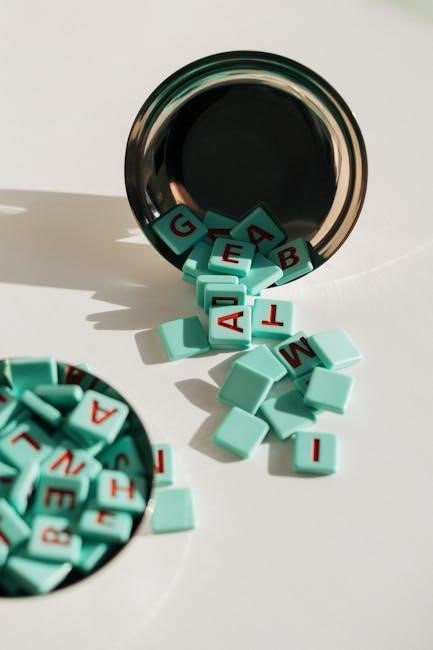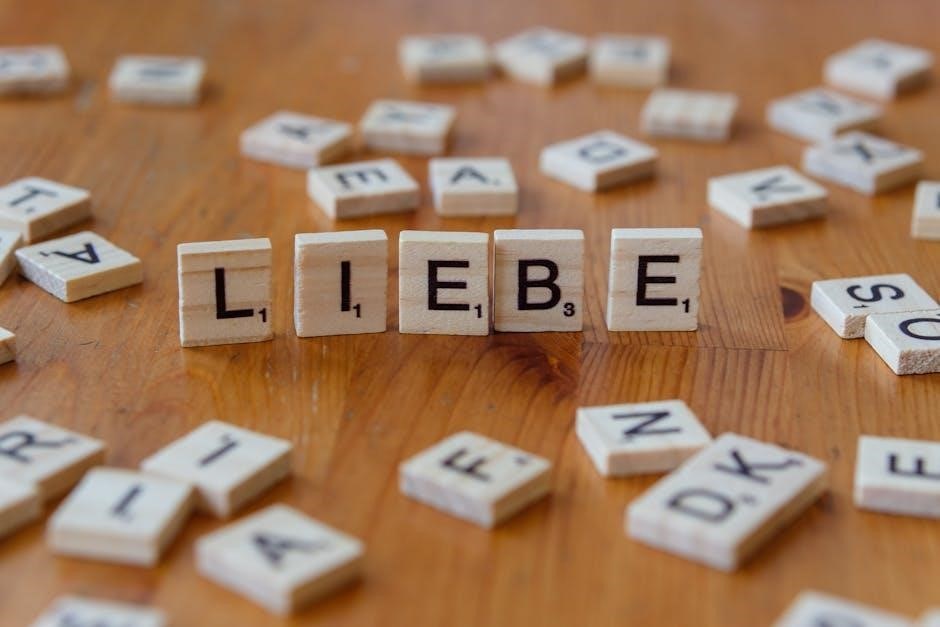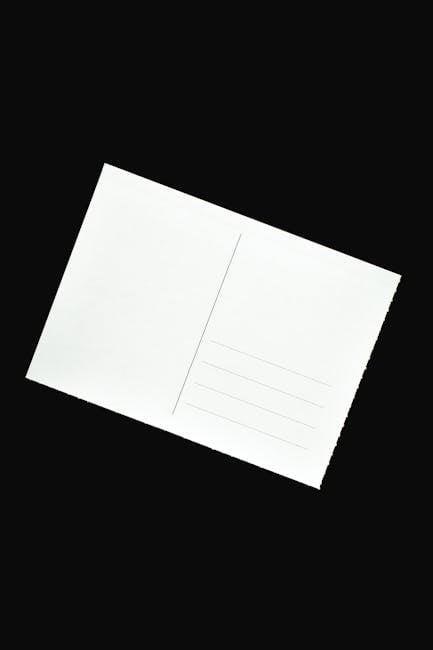Letter B Worksheets PDF: A Comprehensive Guide
Embark on a learning journey with Letter B worksheets in PDF format, designed to help children master letter recognition and handwriting․ This comprehensive guide introduces a variety of printable activities, perfect for preschoolers and kindergarteners, focusing on uppercase and lowercase letter formation, vocabulary building, and fun exercises․
Letter B worksheets provide a foundational step in early literacy, designed to introduce children to the second letter of the alphabet in an engaging and interactive manner․ These worksheets, often available in PDF format, are a valuable resource for parents, teachers, and homeschoolers alike, offering a diverse range of activities to cater to different learning styles․
From tracing exercises that develop fine motor skills to coloring pages that associate the letter B with relevant images like bees and butterflies, these worksheets create a multi-sensory learning experience․ They help children recognize the letter in both uppercase (B) and lowercase (b) forms and understand its sound through vocabulary-building activities․
Letter B worksheets can be seamlessly integrated into preschool and kindergarten curricula, providing structured lessons that reinforce letter recognition, handwriting, and phonics skills․ They offer a fun and accessible way for young learners to build a strong foundation in language arts, preparing them for more advanced reading and writing activities․ Ultimately, these worksheets aim to foster a love for learning and equip children with the essential skills they need to succeed academically․
Tracing Uppercase Letter B

Tracing the uppercase Letter B is a crucial step in handwriting development for young learners․ Worksheets dedicated to this task provide a structured approach, guiding children through the correct formation of the letter using dotted lines and directional arrows․
These worksheets often begin with large, clear examples of the letter B, allowing children to visually grasp its shape before attempting to trace it․ The dotted lines serve as a guide, helping them develop the necessary fine motor skills and muscle memory to write the letter independently․ As they progress, the worksheets may incorporate variations in size and style, challenging them to adapt and refine their technique․
Some worksheets also include visual cues, such as images of objects that start with the letter B (e․g․, ball, bear), to reinforce letter recognition and association․ By repeatedly tracing the uppercase Letter B, children gain confidence in their ability to form the letter accurately and consistently, setting a solid foundation for future handwriting success․ Furthermore, these tracing activities enhance their hand-eye coordination and concentration, contributing to their overall cognitive development․
Tracing Lowercase Letter b

Mastering the lowercase Letter b is just as essential as learning its uppercase counterpart․ Worksheets designed for tracing the lowercase b offer a similar structured approach, aiding children in developing the fine motor skills needed for handwriting proficiency․ These worksheets typically feature dotted lines, guiding arrows, and clear examples of the lowercase b to ensure proper formation․
The lowercase b, with its unique shape, can sometimes be challenging for young learners․ Therefore, these worksheets often incorporate engaging elements, such as illustrations of objects starting with the letter b (e․g․, bee, balloon), making the learning process more enjoyable and memorable․ Repetitive tracing helps children internalize the correct stroke order and muscle memory required for writing the letter fluently;
As children progress, the worksheets may introduce variations in letter size and spacing, encouraging them to adapt and refine their handwriting skills․ Some worksheets also include opportunities to trace the lowercase b within words and simple sentences, providing context and reinforcing letter recognition in a practical way․ This comprehensive practice builds confidence and sets the stage for more advanced handwriting activities․
Letter B Tracing with Lines and Boxes
Letter B tracing worksheets incorporating lines and boxes offer a structured approach to handwriting practice, particularly beneficial for young learners developing fine motor skills․ These worksheets provide a clear framework, guiding children in forming both uppercase and lowercase Letter B within defined boundaries․ The lines serve as visual aids, ensuring consistent letter height and alignment, while the boxes help maintain proper spacing between letters․
The use of lines and boxes can be especially helpful for children who struggle with letter formation or spatial awareness․ By confining the Letter B within these parameters, learners can focus on mastering the correct strokes and curves without feeling overwhelmed by the open space of a blank page․ This structured approach can also improve legibility and reduce common handwriting errors․

Many worksheets of this type include variations to challenge children as they progress․ These may involve reducing the prominence of the lines and boxes, gradually encouraging learners to write more freely while still maintaining control over letter formation․ Some worksheets also incorporate dotted lines within the boxes, providing additional guidance for tracing the Letter B accurately․ This method reinforces learning and prepares students for independent writing․
Letter B Coloring Pages and Activities
Letter B coloring pages and activities provide a fun and engaging way for children to reinforce their knowledge of the alphabet․ These worksheets combine letter recognition with creative expression, making learning an enjoyable experience․ Coloring pages often feature images of objects that begin with the letter B, such as balls, bears, butterflies, and bananas, helping children associate the letter with corresponding vocabulary․
Beyond coloring, these activities can include a variety of interactive elements․ For example, some worksheets may ask children to identify and color only the objects that start with the Letter B, promoting critical thinking and vocabulary development․ Others might incorporate simple mazes where children must follow a path of Letter Bs to reach a destination, enhancing problem-solving skills․
Furthermore, Letter B activity sheets can include cut-and-paste exercises, where children cut out pictures or letters and arrange them on a designated area․ These activities help develop fine motor skills and spatial reasoning․ Integrating coloring and activities into Letter B worksheets offers a multi-sensory approach to learning, catering to different learning styles and ensuring a comprehensive understanding of the alphabet․
Handwriting Practice with Letter B
Handwriting practice with Letter B is a crucial step in a child’s early literacy development, focusing on mastering the formation of both uppercase “B” and lowercase “b”․ Worksheets designed for this purpose typically include guided lines and arrows to show the correct stroke order, helping children develop proper letter formation habits from the start․ These resources often begin with tracing exercises, allowing students to follow dotted lines and gradually build muscle memory․
As children progress, the worksheets may transition to independent writing sections, where they can practice forming the letter without the aid of tracing․ These sections often include varying levels of support, such as faded letters or starting points, to encourage increasing independence․ Additionally, handwriting practice can be integrated with simple words that begin with the letter B, such as “ball,” “bear,” or “bee,” providing a context for the letter and reinforcing vocabulary skills․
Repetition is key in handwriting practice, and worksheets often provide multiple opportunities to write the letter in different sizes and contexts․ This consistent practice helps children internalize the motor skills necessary for fluent handwriting․ By focusing on proper letter formation and providing ample opportunities for repetition, handwriting practice with Letter B worksheets lays a strong foundation for future writing success․
Vocabulary Building with Letter B
Vocabulary building with Letter B worksheets is an engaging way to expand a child’s understanding and use of words starting with the second letter of the alphabet․ These worksheets typically feature a variety of activities that introduce and reinforce new vocabulary, often incorporating colorful images and interactive exercises to maintain a child’s interest․ Common vocabulary words associated with Letter B include “ball,” “bear,” “bee,” “book,” and “banana,” among others․
Activities might involve matching words to pictures, filling in missing letters in words, or even creating simple sentences using the new vocabulary․ Worksheets may also include word searches, crossword puzzles, or other games that challenge children to recall and apply their knowledge of Letter B words․ By associating the letter with familiar and relatable objects and concepts, these worksheets make the learning process more accessible and enjoyable․
Furthermore, vocabulary building with Letter B can be extended through storytelling and creative writing prompts․ Children can be encouraged to draw pictures of their favorite Letter B words or write short stories incorporating these terms․ This multi-sensory approach to learning not only enhances vocabulary acquisition but also fosters creativity and critical thinking skills․ Through consistent exposure and engaging activities, Letter B worksheets can significantly contribute to a child’s overall language development․
Integrating Letter B Worksheets into Curriculum
Integrating Letter B worksheets into a curriculum provides a structured and engaging approach to early literacy education․ These worksheets serve as valuable tools for reinforcing letter recognition, phonics, and handwriting skills․ Educators can seamlessly incorporate them into daily lessons, literacy centers, or homework assignments, tailoring the activities to suit various learning styles and paces․ By using a variety of Letter B worksheets, teachers can ensure that students receive comprehensive practice in different areas of language development․

For instance, tracing worksheets can improve fine motor skills and letter formation, while coloring pages featuring Letter B words can enhance vocabulary and visual association․ Interactive games and puzzles can make learning fun and reinforce concepts in a playful manner․ Furthermore, Letter B worksheets can be used to assess student progress and identify areas where additional support may be needed․ Teachers can track student performance on these worksheets to inform their instructional decisions and provide targeted interventions․
Moreover, Letter B worksheets can be integrated into thematic units, such as “B is for Bears” or “B is for Butterflies,” creating a cohesive and immersive learning experience․ By connecting the letter to real-world objects and concepts, educators can help students make meaningful connections and deepen their understanding․ With careful planning and creative implementation, Letter B worksheets can be a powerful component of any early childhood curriculum, fostering a love of reading and writing in young learners․




Leave a Reply
You must be logged in to post a comment.